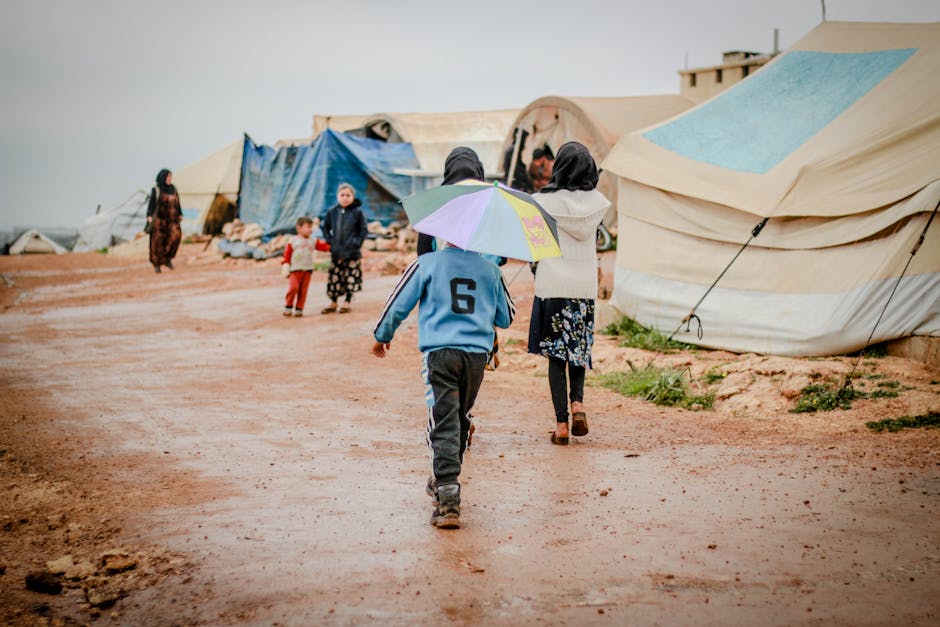Key Takeaways
- Both “Underway” and “Ongoing” describe processes related to the establishment or adjustment of geopolitical boundaries, but they differ in their temporal and procedural contexts.
- “Underway” typically refers to actions or negotiations that have formally commenced and are actively progressing toward boundary definition or resolution.
- “Ongoing” denotes continuous or persistent activities concerning boundaries that may involve long-term disputes, maintenance, or evolving agreements without a defined endpoint.
- In geopolitical contexts, “Underway” often implies a phase with concrete steps and deadlines, while “Ongoing” suggests a broader, sometimes indefinite, state of affairs.
- Understanding these terms aids in analyzing international boundary disputes, treaty negotiations, and territorial administration dynamics.
What is Underway?

“Underway” in geopolitical boundary contexts refers to the active phase during which boundary delimitation, demarcation, or negotiation processes have officially started. This term emphasizes that specific actions or procedures are currently being executed toward defining or adjusting territorial lines.
Formal Initiation of Boundary Processes
When a boundary negotiation is described as underway, it signals that relevant parties have agreed to engage and have initiated formal discussions or surveys. For example, after a peace agreement, boundary commissions may begin their work, marking the official start of the delimitation process.
Such initiation often follows diplomatic exchanges or conflict resolution efforts, where previously dormant or undefined borders become the subject of active clarification. The status of underway reflects tangible progress beyond preliminary talks or informal considerations.
Active Surveying and Mapping Efforts
Underway status encompasses physical activities like joint surveying missions or cartographic mapping to establish precise border lines. These operations involve technical teams conducting fieldwork to collect data that supports negotiations or legal definitions.
For instance, in the India-Bangladesh border demarcation efforts, once the process was underway, teams meticulously verified ground realities to resolve enclaves and disputed patches. This phase is critical to translating political agreements into concrete geographical representations.
Negotiation and Diplomatic Engagement
Underway also relates to diplomatic negotiations where states actively exchange proposals, counterproposals, or coordinates concerning boundary issues. This stage often features formal meetings, treaty drafts, and involvement of international mediators or organizations.
The ongoing Israel-Palestine boundary talks, when underway, involve detailed dialogue with deadlines and action points, reflecting a structured attempt to reconcile territorial claims. Thus, underway implies a focused effort with measurable objectives.
Legal and Technical Framework Establishment
During the underway phase, legal frameworks such as treaties, protocols, or memoranda of understanding are drafted or finalized to govern the boundary arrangements. Concurrently, technical standards for demarcation are agreed upon to ensure clarity and avoid future disputes.
For example, the Ethiopia-Eritrea Boundary Commission, once underway, set specific criteria for demarcation based on colonial treaties and geographic features. This dual approach ensures that boundary definitions are both legally binding and practically enforceable.
Time-Bound and Goal-Oriented Efforts
Processes underway are typically marked by schedules or deadlines aimed at resolving boundary issues within a defined timeframe. This temporal element differentiates underway from more indefinite or open-ended boundary matters.
For instance, after conflict cessation, boundary delimitation efforts may be underway with the goal of completion within months or years, reflecting urgency and political will. The presence of milestones and reporting requirements underscores the focused nature of underway activities.
What is Ongoing?

“Ongoing” in the context of geopolitical boundaries describes continuous or protracted processes related to border management, disputes, or adjustments that persist over extended periods. This term highlights the enduring nature of boundary-related activities without a fixed conclusion.
Persistent Boundary Disputes
Ongoing boundary disputes often span decades, reflecting unresolved territorial claims or ambiguous demarcations between neighboring states. Such disputes may involve intermittent clashes, diplomatic protests, or international arbitration efforts.
The Kashmir conflict between India and Pakistan exemplifies an ongoing boundary issue, with fluctuating tensions and periodic negotiations but no definitive resolution. This persistence underscores the complexity and sensitivity of some geopolitical boundaries.
Continuous Monitoring and Maintenance
In many regions, boundaries require ongoing physical maintenance to prevent encroachments or degradation of demarcation markers. This includes activities such as patrols, marker replacement, and surveillance to uphold border integrity.
The US-Canada border, while peaceful, involves ongoing joint efforts to maintain boundary monuments and manage cross-border infrastructure. This constant attention ensures that peaceful coexistence is preserved despite geographic and administrative challenges.
Adaptive Boundary Management
Ongoing boundary processes may involve adjustments due to environmental changes like river course shifts or rising sea levels that affect maritime or terrestrial borders. Such adaptations require continued collaboration and legal interpretation.
For example, the shifting course of the Rio Grande has led to ongoing discussions between the US and Mexico regarding boundary realignments. These scenarios illustrate that boundaries are not always static and may necessitate sustained management efforts.
Protracted Negotiations and Diplomatic Engagement
Ongoing negotiations often lack clear endpoints, reflecting complex geopolitical dynamics or entrenched positions. These dialogues may cycle through phases of tension and détente without culminating in formal agreements.
The South China Sea territorial disputes involve ongoing diplomatic efforts among multiple claimant states, with no definitive settlement in sight. This protracted nature highlights the challenges of multilateral boundary issues.
Long-Term Impact on Regional Stability
Ongoing boundary issues can influence regional security and cooperation, as unresolved lines may foster mistrust or conflict potential. Conversely, managing ongoing boundaries effectively can contribute to peace and economic integration.
The Good Friday Agreement led to ongoing cooperation on the Northern Ireland border, balancing political sensitivities with practical governance. This example shows how ongoing boundary arrangements can support broader stability goals.
Comparison Table
The following table highlights key distinctions between “Underway” and “Ongoing” within the realm of geopolitical boundaries.
| Parameter of Comparison | Underway | Ongoing |
|---|---|---|
| Phase of Process | Initial active phase with formal commencement | Extended or indefinite continuation of boundary-related activities |
| Temporal Scope | Typically time-bound with set deadlines | Open-ended without fixed completion dates |
| Nature of Activity | Focused tasks such as surveying, negotiation, and legal drafting | Continuous monitoring, maintenance, and dispute management |
| Examples | Boundary delimitation commission work post-conflict | Long-standing territorial disputes like Kashmir or South China Sea |
| Legal Framework Status | Establishment or finalization of treaties and protocols | Maintenance and interpretation of existing agreements |
| Diplomatic Engagement | Structured talks with scheduled milestones | Intermittent or perpetual negotiations without closure |
| Physical Activities | Active field surveys and border demarcation | Ongoing border patrols and marker upkeep |
| Impact on Conflict Resolution | Represents progress toward resolution | May reflect unresolved or persistent tensions |
| Stakeholder Involvement | Often involves newly formed commissions or task forces | Includes long-term administrative bodies and security forces |
| Geographical Changes Consideration | Accounts for current geography during demarcation | Addresses continuous environmental impacts on boundaries |
Key Differences
- Process Initiation vs Continuity